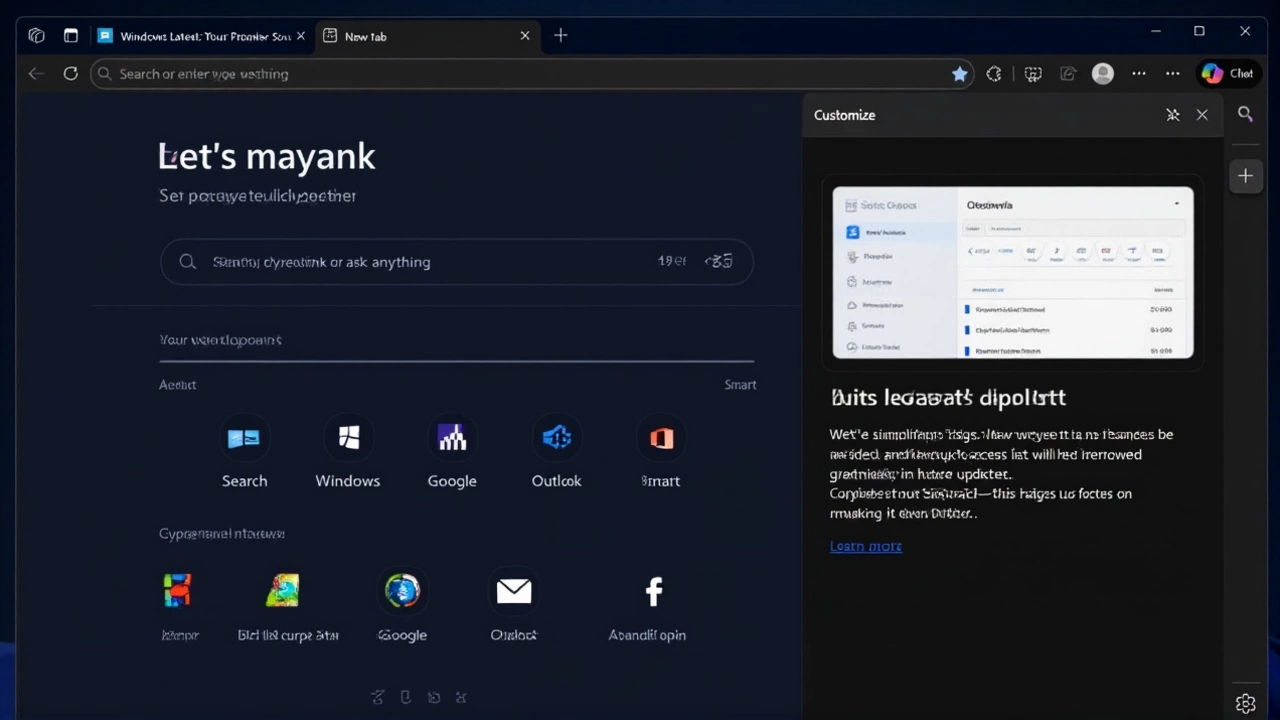On November 16, 2025, Microsoft Advertising quietly dropped a game-changer for digital marketers: an AI-powered feature called Image Animation that turns static images into short, scroll-stopping video ads — no camera, no editor, no budget for a full shoot required. The tool, rolled out between November 16–19, 2025, lives inside Copilot across Windows and Microsoft 365, and it’s already reshaping how brands like Priceline and global agencies like Carat create content. The twist? It’s not just about making videos. It’s about making millions of them — customized for every city, every event, every niche traveler — at scale.
From Still to Motion in Seconds
James Murray, global product marketing lead for generative AI at Microsoft, showed off the new tool during a briefing on November 16. The process is absurdly simple: upload a product photo, select a motion style — pan, zoom, subtle fade — and Copilot generates a 5- to 15-second video asset optimized for YouTube, Instagram, and Microsoft’s own ad network. No After Effects. No freelance videographer. Just a few clicks.
It’s not magic, but it might as well be. The average American now spends 4 hours and 14 minutes per day watching digital video, according to Microsoft’s own data. That’s more time than most people spend commuting, cooking, or even sleeping. Advertisers who cling to static banners are losing ground — fast. Microsoft Advertising’s solution? Automate the creation of thousands of video variants tailored to local events, independent hotels, or even one-off concerts in Des Moines or Chattanooga.
Priceline and Carat Are Already Seeing Results
Priceline, which manages roughly 200,000 ad campaigns annually, was among the first to test Image Animation. Their senior analyst, Yetish Srinidhi, says the tool doesn’t just save time — it unlocks new opportunities. "We’re now running hyper-local campaigns for small mountain lodges and festival venues we never had the manpower to target before," he said. "Copilot scrapes our landing pages, matches our brand tone, and even enforces character limits. We’ve seen a 10% lift in CTR across these new video assets."
Meanwhile, Carat’s SVP of Paid Search, John Fraze, had a different kind of win. "What used to take me 30 minutes to pull performance reports and diagnose underperforming creatives? Now it’s one to two minutes," he said. "Copilot doesn’t just make ads — it explains why they’re working or failing. That’s a game-changer for agency teams juggling dozens of clients."
Performance Comparison: Turning Data Into Decisions
But the real brilliance lies in the companion tool: Performance Comparison. Launched alongside Image Animation, this feature lets advertisers compare two ad variants side-by-side — not just clicks or impressions, but trends over time. You can benchmark day-over-day, quarter-over-quarter, or even test a new video against a control group. Microsoft’s message is clear: "Data is just noise until you understand what it’s trying to tell you."
For example, a travel brand could test two versions of a video ad for a New Orleans jazz festival — one with upbeat music, another with ambient street sounds. Performance Comparison shows which one drives more bookings from users aged 28–35 in the Southeast, and why. No guesswork. No spreadsheets filled with pivot tables.

Behind the Scenes: The AI Ecosystem Expands
Image Animation isn’t standalone. It’s part of a broader push by Microsoft Advertising to embed generative AI into every layer of ad creation. Alongside video generation, they’ve added Background Generation, Display Ad Generation, and Brand Kit tools — all available via API globally, except mainland China. This means brands can plug Microsoft’s AI directly into their own platforms, automating creative workflows at an unprecedented scale.
Google’s Asset Studio, launched in October 2025, offers similar image-to-video tools — but with a different focus. Google leans into text-to-video prompts, letting marketers describe scenes in natural language. Microsoft, by contrast, starts with existing brand assets and enhances them. The difference? Microsoft’s approach is less about imagination, more about efficiency.
What’s Next? The Local Ad Revolution
The biggest implication? Small businesses and regional marketers are about to get a massive boost. Before, creating localized video ads for 50 different towns meant hiring 50 freelancers. Now, a single campaign can auto-generate 50 unique videos — each with the right local landmark, weather context, or event timing. Think: a ski resort ad in Aspen with snowfall animation, versus the same ad in Phoenix with a sunset backdrop and a "Winter Escape" tagline.
Microsoft’s Power BI update on November 19, 2025, hints at more to come — better visual recommendations, expanded libraries, smarter context awareness. But for now, the advertising world is focused on one thing: Can you afford to keep running static ads in a world where attention is measured in milliseconds?
Frequently Asked Questions
How does Image Animation work without video editing skills?
The tool uses Microsoft’s AI to analyze the composition, lighting, and movement potential of a static image. It then applies pre-trained motion templates — like slow zooms, gentle pans, or subtle particle effects — that match the asset’s tone. Advertisers choose from five preset styles, and Copilot renders the video in under 30 seconds. No manual keyframes or timelines needed.
Who can access the Image Animation tool?
The pilot is available to all advertisers using Microsoft Ads Studio in over 180 countries, excluding mainland China due to regulatory restrictions. Access requires enrollment in the Video Templates program within Ads Studio. Early testers like Priceline and Carat were invited based on campaign volume and creative diversity needs.
How is this different from Google’s Asset Studio?
Google’s tool starts with text prompts — you describe a scene, and it generates visuals from scratch. Microsoft’s Image Animation starts with your existing brand assets (logos, product photos) and animates them. It’s less about creativity from nothing, more about maximizing what you already have. That makes it faster, safer for brand compliance, and better suited for high-volume campaigns.
What impact does this have on small businesses?
For small businesses, this means professional-grade video ads without hiring a studio. A local bakery can turn a photo of their croissants into a 10-second video with warm lighting and steam effects — all for free within Microsoft Ads. This levels the playing field against big brands that used to dominate video advertising through sheer budget.
Why is the Performance Comparison tool so important?
Most advertisers struggle to tell if a change in performance is due to their ad, the season, or external factors. Performance Comparison isolates variables — like ad format or audience segment — and shows statistically significant differences. For example, if a video ad outperforms a static one by 12% with a 95% confidence level, you know it’s not luck. That’s decision-making, not guesswork.
Will this replace human creatives?
Not replace — elevate. Teams are shifting from manual production to strategic oversight. Copywriters now focus on messaging, not character limits. Designers guide brand kits instead of resizing banners. The AI handles the grind. Humans handle the vision. That’s not obsolescence — it’s evolution.
